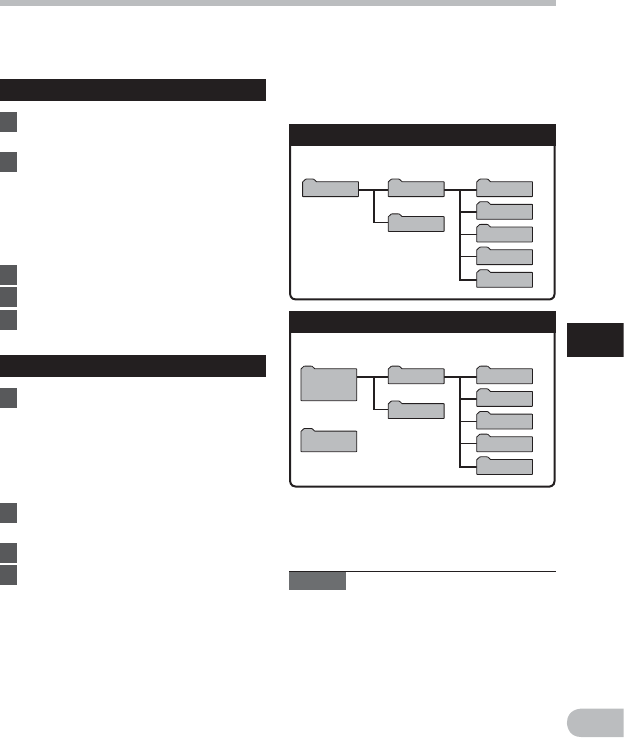
89
5
EN
Transfer the voice files to your PC
Folder A
Folder B
Folder C
Folder D
Music
LS_7
Recorder
Folder A
Folder B
Folder C
Folder D
Music
Recorder
Windows
Removable
Disk
Macintosh
Untitled
Folder E
Folder E
Transfer the voice files to your PC
The 5 voice folders of this recorder are named as [Folder A], [Folder B], [Folder C], [Folder D]
and [Folder E
], and the recorded voice files are saved in these folders.
Windows
1 Connect the recorder to your PC
(☞ P. 87 ).
2 Open the Explorer window.
• When you connect the recorder to
Windows and open [My Computer],
it will be recognized by the drive
name of the product name. Inserting
a microSD card will allow you to use it
as [Removable Disk].
3 Open the product name folder.
4 Copy the data.
5 Disconnect the recorder from the
PC (☞ P. 88) .
Macintosh
1 Connect the recorder to your PC
(☞ P. 87 ).
• When you connect the recorder to
Mac OS, it will be recognized by the
drive name of the product name
on the desktop. If a microSD card is
inserted, [Untitled] will be displayed.
2 Double-click the product name
icon on the desktop.
3 Copy the data.
4 Disconnect the recorder from the
PC (☞ P. 88) .
Notes
• While transmitting data, [Busy] is
displayed, and the LED indicator light
flashes. NEVER disconnect the USB cable
while the LED indicator light is flashing. If
you do, the data will be destroyed.
• In the Mac OS operational environment,
WMA format files cannot be played back.
• In a Windows standard environment,
24-bit wav-format files cannot be played.
Use “Olympus Sonority” for playback of
such files.
4 Drive names and folder names
when a PC is connected:
Built-in flash memory
microSD card
Drive name Folder name
Drive name Folder name
